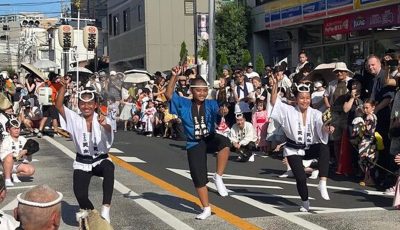Saipan Air files $50M suit vs Swift Air execs
Saipan Air is suing Donald A. Stukes, Jeffrey Conry, Hank Tobert, Boris Van Lier, and 10 unnamed persons for fraud, violations of the Racketeer Influenced and Corrupt Organization Act, and civil conspiracy.
Saipan Air asked the U.S. District Court for the NMI to hold the defendants liable to pay the company $50 million in punitive damages, plus unspecified amounts in restitution, special damages, attorney’s fees, and court costs.
Steven P. Pixley, counsel for Saipan Air, told Saipan Tribune yesterday that Swift Air was not named in the lawsuit because of the bankruptcy petition it filed, preventing it from being sued. Pixley said they are suing these persons in their individual capacities.
Swift Air LLC filed for bankruptcy protection on June 27, 2012.
Pixley said they investigated and interviewed a number of people and “we believe that these individuals committed acts of fraud against Saipan Air.”
“We believe we have a case against them for fraud and violations of the Racketeer Influenced and Corrupt Organization Act, and civil conspiracy,” he added.
Pixley said that based on their background investigation, they learned that these individuals had been involved with multiple airlines for the last two years.
“Direct Air is one of the airlines, Sky King and another airline.and the same pattern of conduct.that these guys acquire ownership interest and then basically used the money from the airlines and ended up filing for bankruptcy,” Pixley said.
“Just a pattern of conduct and we think that it’s very serious that they committed criminal acts. We’re going after them,” he added.
Pixley said that, beginning Dec. 20, 2012, the defendants used Swift Air as a mere sham and shell to defraud Saipan Air and otherwise operated this entity as their alter ego.
Since gaining a U.S. carrier is a lengthy process, Saipan Air planned to go into service using a wet lease of ACMI (aircraft, crew, maintenance, and insurance) agreement with an existing certified part-121 carrier.
“This type of arrangement is common practice for start-up airlines. While such leases are expensive, they permit airlines to quickly start and establish themselves while going through the steps to become part-121 carriers themselves,” Pixley explained.
On Dec. 12, 2011, Conry contacted Adam Ferguson, chief operating officer of Saipan Air, and disclosed that Swift Air was being purchased by a group of investors under the name Avondale Ventures headed by Tobert.
Conry allegedly falsely represented that Avondale had a $70 million investor portfolio and that Avondale would be the primary source of investment for Swift Air.
Conry did not disclose to Saipan Air that Stukes was affiliated with Avondale and that he had an ownership interest in Swift Air. Conry allegedly falsely told Ferguson that he did not know Stukes.
Pixley said that Conry and Stukes had been involved in other airline ventures together.
On Dec. 13, 2011, Conry told Ferguson that Lier, chief operating officer of Dynamic Air, was leaving Dynamic Air to join Swift Air.
Pixley said that Saipan Air had previously communicated with Dynamic Air about its business plan to lease aircraft and fly to Japan and China.
Pixley said that Lier provided information to Conry relating to Saipan Air’s program.
On Jan. 11, 2012, Lier, now vice president and chief operating officer of Swift Air, gave a presentation on Saipan on behalf of Swift Air. Lier represented that Swift Air could deliver the aircraft. At the time of this presentation, Saipan Air was negotiating with various other prospective carriers.
Based on the defendants’ representations, Saipan Air decided to initiate negotiations with Swift Air as a backup on March 15, 2012.
On March 16, 2012, Lier and Conry presented to Ferguson that they could meet Saipan Air’s launch date of July 1, 2012.
Ferguson traveled to Arizona on March 21, 2012, where he met with Conry and Lier. At the meeting, the defendants showed Ferguson financial statements indicating that Swift Air had virtually no debt.
Pixley said that Saipan Air later learned about Swift Air’s $1.6 million liability to the U.S. Internal Revenue Agency.
The defendants further represented that Avondale had $70 million in assets and that these funds would be used to support Saipan Air’s program.
On March 27, 2012, Conry initiated a conference call with Ferguson and Jeremy Cape, director of sales for International Lease Finance Corp., to ensure that the aircraft were locked up through a letter of intent.
Pixley said it was clearly understood that $700,000 was required to be paid to IFLC to ensure that the aircraft were secured for Saipan Air’s business operations.
On March 29, 2012, Lier began pressuring Saipan Air to submit a security deposit. Lier sent an email to Ferguson stating that he had not slept in two nights and that it was imperative that Saipan Air sign the agreement and pay the deposit for the aircraft.
Lier telephoned Ferguson several times between March 29 to April 6, 2012.
On April 6, 2012, Lier sent an email to Ferguson stating that Swift Air “have roughly 1.2MM (sic) in deposits to make, and I need to have your deposit before I am allowed to fund the aircraft deposits and other down payments.”
Lier further stated that they urgently needed Saipan Air’s deposit in order to secure the aircraft from ILFC.
Lier allegedly lied to Ferguson that Saipan Air would lose the aircraft to another carrier unless the funds were wired immediately.
On April 6, 2012, Saipan Air entered into a Aircraft ACMI Charter Agreement with Swift Air relating to the charter of two Boeing 757-200 aircraft and one Boeing 737-400 aircraft.
The aircraft were to be delivered to Saipan Air on or before July 1, 2012, to transport tourists from various locations in Japan and China to and from the CNMI.
Pixley said at the time the agreement was executed, the defendants knew that Swift Air could not or would not perform the agreement.
On April 9, 2012, relying on the defendants’ representations, Saipan Air wired a $900,000 “security deposit” to Swift Air from the Bank of Hawaii on Saipan to a Swift Air account at the U.S. Bank of Arizona.
The defendants expressly represented that $700,000 from this wire transfer would be paid to ILFC to secure the aircraft. The remaining $200,000 was to be used by Swift Air to pay for manuals, pilot flight training, and other Saipan Air program matters.
Saipan Air later learned on May 18, 2012, that the defendants allegedly converted and misappropriated the funds. Pixley said the defendants did not submit the $700,000 deposit to ILFC.
On May 23, 2012, Conry asked Saipan Air to provide a letter of credit in the amount of $524,000 to ILFC in order to ensure that the aircraft would be available for the July 1, 2012, launch date.
The defendants represented that they were still on track for the July 1 launch date, but that they required additional funding in the amount of $376,000 to ensure that the aircraft were fully certified and available for Saipan Air operations.
A second wire transfer in the amount of $376,00 was sent to Swift Air on May 29, 2012.
On May 27, 2012, Conry called Ferguson several times and represented that Swift Air urgently needed a bridge loan of $1.5 million in order to perform their obligations under the agreement. Pixley said negotiations relating to this bridge loan continued until June 19, 2012.
On June 20, 2012, Ferguson received an email from Conry stating that Swift Air had located a new investor [Reggie Fowler] who could provide financing to ensure Swift Air’s performance of the Saipan Air program.
The proposal, however, was conditioned upon Saipan Air’s agreement that the defendants could keep the $1.276 million security deposits and Saipan Air would further relieve the defendants of further performance under the contract.
Stukes, during negotiations relating to the bridge loan, later told Saipan Air to ignore Conry’s proposal.
Pixley said that, on June 24, 2012, the defendants posted on an Internet Airline Pilot Forum that Swift Air “will not be providing lift for Saipan Air’s operations due to cancellation of the contract by [Saipan Air].”
On June 24, 2012, Saipan Air received a letter from Lier dated June 21, 2012, stating that “Swift hereby provides notice to SAI that the agreement is hereby terminated and canceled without further notice or effect.”
Pixley said the pretext of this “termination” was alleged delays in Federal Aviation Administration certifications.
“These delays were caused by the actions and omissions of the defendants,” Pixley said.
On June 27, 2012, Swift Air filed for bankruptcy protection.
Pixley said that Saipan Air incurred substantial damages arising from the acts and omissions of the defendants.
These damages, the lawyer said, include funds paid to the defendants, marketing efforts in Japan and China, hiring of employees, purchase of supplies, renovation of housing facilities for personnel, and ticket sales in Japan and China.
Saipan Air was compelled to cease all its business operations on June 29, 2012.



























